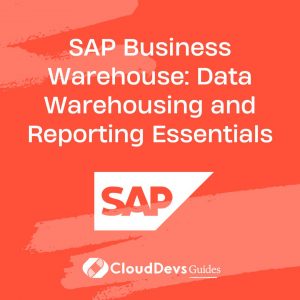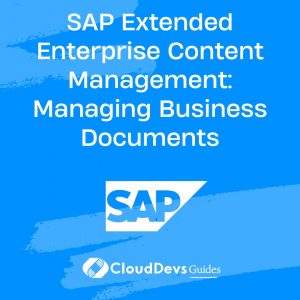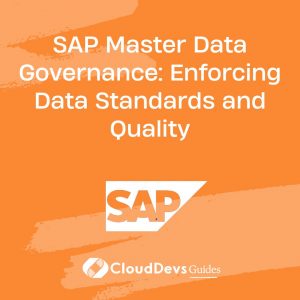SAP Business Warehouse: Data Warehousing and Reporting Essentials
In today’s data-driven business landscape, making informed decisions based on accurate and up-to-date information is crucial for success. SAP Business Warehouse (SAP BW) is a powerful solution that plays a pivotal role in managing, storing, and reporting on data within an organization. In this comprehensive guide, we’ll delve into the essentials of SAP BW, exploring its key features, benefits, and how it empowers businesses to harness the full potential of their data.
1. Introduction to SAP
1.1 What is SAP Business Warehouse?
SAP Business Warehouse (SAP BW) is a comprehensive data warehousing and business intelligence solution developed by SAP SE. It provides a centralized platform for collecting, storing, and processing data from various sources within an organization. SAP BW is designed to support decision-making processes by offering powerful reporting and analytics capabilities.
1.2 Why is SAP BW Essential?
In today’s competitive business environment, data is often scattered across different systems and applications. SAP BW helps organizations consolidate this data into a single, coherent view, making it easier to extract valuable insights. Here are some key reasons why SAP BW is essential:
- Data Integration: SAP BW enables the integration of data from various sources, including SAP and non-SAP systems, databases, and external data providers. This unified view of data simplifies reporting and analysis.
- Data Quality: It includes features for data cleansing, transformation, and validation, ensuring that the data used for reporting is accurate and consistent.
- Efficient Reporting: With its robust reporting tools and predefined templates, SAP BW streamlines the reporting process, allowing users to create insightful reports and dashboards.
- Scalability: SAP BW can handle large volumes of data and is scalable to meet the growing data demands of an organization.
2. Key Features of SAP BW
SAP BW offers a wide range of features that empower organizations to effectively manage their data and generate valuable insights. Let’s explore some of its key features.
2.1 Data Warehousing
At its core, SAP BW is a data warehousing solution. It provides a secure and centralized repository for storing structured and unstructured data. The data is organized into data models, making it accessible for reporting and analytics.
2.2 Data Modeling
Data modeling is a critical aspect of SAP BW. It allows users to define the structure of data in a way that is meaningful for reporting. Data modeling includes defining dimensions, hierarchies, measures, and relationships between data objects.
2.3 Data Extraction and Transformation
SAP BW can extract data from various source systems, such as SAP ERP, databases, and flat files. Once extracted, the data can be transformed, cleansed, and enriched before being loaded into the data warehouse. This ensures data quality and consistency.
2.4 Reporting and Analytics
One of the standout features of SAP BW is its reporting and analytics capabilities. It offers a range of tools and options for creating interactive reports, dashboards, and data visualizations. Users can perform ad-hoc queries and drill down into data to gain deeper insights.
2.5 Integration Capabilities
SAP BW seamlessly integrates with other SAP solutions, such as SAP Business Objects and SAP Analytics Cloud, to enhance reporting and analytics capabilities. It also supports open standards like SQL and ODBC, enabling integration with third-party tools and applications.
3. Benefits of SAP BW
Implementing SAP BW can yield numerous benefits for an organization. Let’s explore some of the key advantages it offers.
3.1 Improved Decision-Making
SAP BW provides decision-makers with access to real-time and historical data in a format that is easy to understand. This empowers them to make informed decisions quickly, leading to better business outcomes.
3.2 Enhanced Data Quality
By implementing data validation and cleansing routines, SAP BW ensures that data is accurate and consistent. This improves trust in the data and reduces errors in reporting and analysis.
3.3 Streamlined Reporting Processes
Creating reports in SAP BW is efficient and user-friendly. Predefined templates and drag-and-drop interfaces make it easy for business users to generate their own reports without heavy reliance on IT.
3.4 Scalability and Performance
As an organization’s data needs grow, SAP BW can scale horizontally and vertically to accommodate increased data volumes. Its robust architecture ensures high performance even with large datasets.
4. Getting Started with SAP BW
To get started with SAP BW, you’ll need to go through several essential steps, including installation and setup, data loading, data modeling, and report creation.
4.1 Installation and Setup
Installing SAP BW involves configuring the system landscape, defining data sources, and setting up user roles and permissions. This step ensures that SAP BW is ready to receive data.
4.2 Data Loading
Data loading is the process of extracting data from source systems, transforming it as needed, and loading it into SAP BW. Various methods and tools are available for this purpose, including Extract, Transform, Load (ETL) processes.
4.3 Creating Data Models
Data modeling is a crucial step in SAP BW that involves defining the structure of your data warehouse. This includes creating InfoObjects (representations of data objects), InfoCubes (multi-dimensional data structures), and DataStore Objects (data storage containers).
4.4 Building Reports
Once data is loaded into SAP BW and the data models are in place, users can start building reports and dashboards. The reporting tools in SAP BW offer a wide range of options for creating customized reports to meet specific business needs.
5. Code Samples
To help you better understand how SAP BW works, let’s explore some code samples for common tasks in SAP BW.
5.1 Sample ABAP Code for Data Extraction
abap
DATA: it_source_data TYPE TABLE OF source_data,
it_target_data TYPE TABLE OF target_data.
SELECT * FROM source_data INTO TABLE it_source_data.
LOOP AT it_source_data INTO wa_source_data.
" Data transformation logic goes here
wa_target_data-field1 = wa_source_data-field1.
wa_target_data-field2 = wa_source_data-field2.
" Additional transformations
APPEND wa_target_data TO it_target_data.
ENDLOOP.
INSERT target_data FROM TABLE it_target_data.
5.2 Data Modeling Example
sql CREATE INFOOBJECT Customer INFOOBJECTNAME 'Customer' DATATYPE CHAR LENG 10 SHORTTEXT 'Customer Number'. CREATE INFOCUBE SalesCube INFOPROVIDER 'Sales Data' DATATARGET 'SalesCube' USAGE DSO.
5.3 Creating a Basic Report
Creating a report in SAP BW typically involves using a tool like SAP BusinessObjects Web Intelligence or SAP Analytics Cloud. Below is a simplified example of creating a basic report using SAP BusinessObjects Web Intelligence:
- Log in to SAP BusinessObjects Web Intelligence.
- Create a new document.
- Select the data source (SAP BW) and choose the InfoProvider (e.g., SalesCube).
- Drag and drop the desired dimensions and measures onto the report canvas.
- Customize the report layout and formatting.
- Save and publish the report for end-users.
6. Best Practices
To make the most of SAP BW, it’s essential to follow best practices in various areas:
6.1 Data Governance
Establish data governance policies and practices to maintain data quality and consistency. Implement data stewardship roles and responsibilities to ensure data accuracy.
6.2 Performance Optimization
Monitor and optimize the performance of your SAP BW system regularly. This includes tuning queries, managing indexes, and scaling hardware resources as needed.
6.3 Security
Implement robust security measures to protect sensitive data. Define user roles and permissions to control access to different parts of the system.
7. Challenges and Solutions
While SAP BW offers numerous benefits, it’s important to be aware of potential challenges and their solutions.
7.1 Data Volume and Complexity
As data volumes grow, performance can become a concern. Solutions include partitioning large data sets, optimizing queries, and archiving historical data.
7.2 Data Integration
Integrating data from disparate sources can be complex. ETL tools and data integration strategies can streamline this process.
7.3 User Adoption
Ensure proper training and support for end-users to maximize adoption and utilization of SAP BW’s reporting and analytics capabilities.
Conclusion
SAP Business Warehouse is a versatile solution that empowers organizations to unlock the full potential of their data. With its data warehousing, modeling, reporting, and analytics features, SAP BW plays a pivotal role in enabling informed decision-making and driving business success. As data continues to be a critical asset, SAP BW remains at the forefront of data management and analysis.
In the ever-evolving landscape of business intelligence and data analytics, SAP BW continues to adapt and innovate, promising a bright future for organizations looking to harness the power of their data.
In conclusion, by mastering the essentials of SAP BW and following best practices, organizations can position themselves for data-driven success in the digital age.
Table of Contents









